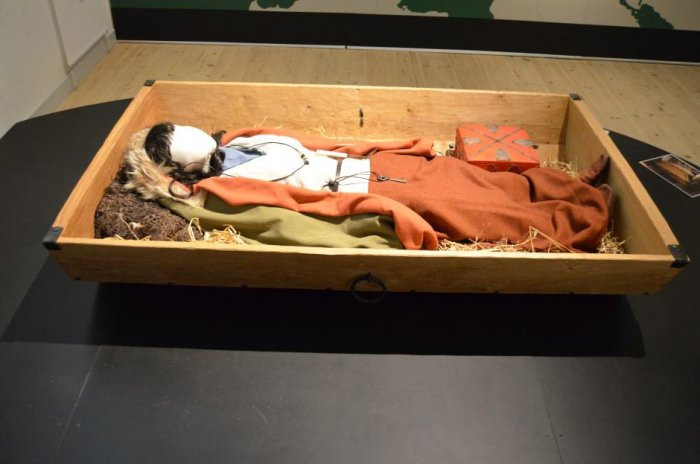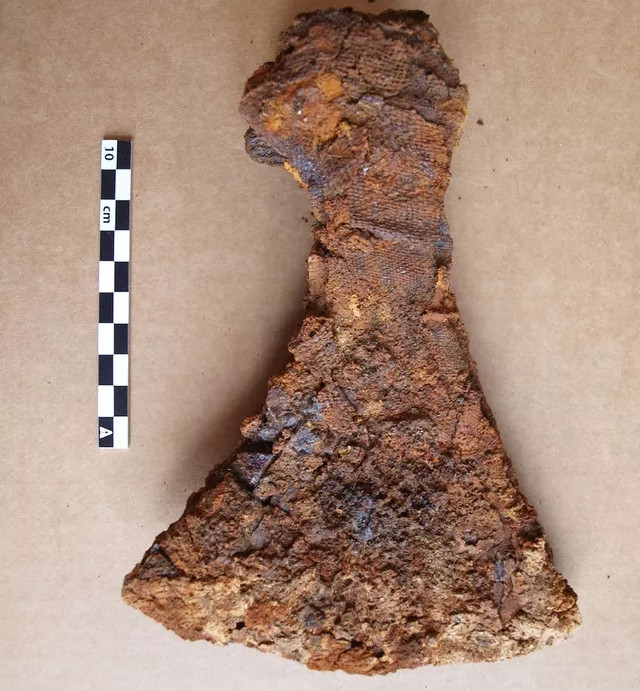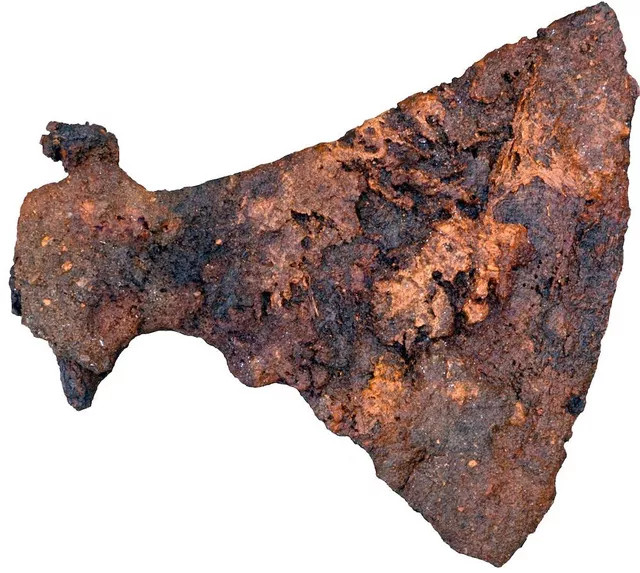Nordic Discovery
The largest Viking Axe ever found
Imagine a Viking warrior with a thick beard and hair, 2 meters tall, holding a giant axe and screaming into battle…
Danish archaeologists have discovered one of the largest Viking axes ever found, buried inside the grave of an ancient “power couple”.
Although very large, this ax has very little decoration on it. From this we can infer that the person using it is a mighty warrior, carrying that big ax to sweep across many fronts, not just something made bigger for decoration.
Although it is not clear what size this ax is, the research team confirms that it is very large and must be held with two hands: “It is amazing, bigger and heavier than all other axes. With this size, it must have had a long handle and had to be used with two hands,” said chief archaeologist Kirsten Nellemann Nielsen from the Solkeborg Museum, Denmark.
“Besides the buried warrior, there was no other object. It seems that he was a fierce warrior when he was alive and wanted future generations to remember him the same when he was buried.”
Archaeologist Nielsen did not mention the actual size of this Viking ax. But he did tell about the process of finding this Viking grave. A “dead house”, a Viking cemetery, was found in 2012. It is 4 meters wide and 13 meters long, containing three separate graves. People discovered these graves when clearing the area for construction.
In the main tomb area of the “dead house”, a team of excavators found the bodies of a man and woman who were believed to be a “power couple”, either born into a noble or influential lineage. large to the community at that time. They weren’t sure that this was a married couple, though.
Archaeologists rely on a variety of evidence to confirm that these two people were both powerful during the era in which they lived, such as tributes and traces of many other things left to them, especially The woman’s shirt had silver threads. She was buried with a key, a symbol of status during the Viking period.

“The special thing is that this couple each has a separate grave and is placed together in one structure,” said archaeologist Nielsen. “I’m not sure if they were brothers or maybe husband and wife. But there’s no doubt that they were both important figures at that time.”
The man in the grave was buried with a giant ax, which required both hands to use and was quite difficult to use. And perhaps the strongest point of this ax is that it makes the opponent tremble in fear. Seeing a Viking warrior with a thick beard and hair screaming, holding a giant ax rushing towards him, who wouldn’t be afraid?
“European people at that time were very afraid of this type of ax, the ax called Dane Ax – the Danish Ax was like the “six-barrel gun” of this era,” Mr. Nielsen compared the fear of the ax to war. modern.

The other axes buried with the other remaining warriors in the “house of the dead” were much smaller than this chief’s giant ax.
So far, Danish archaeologists have only found traces of Vikings in burial sites and have not found any housing areas.
That may change soon, because last April, researchers at the University of Alabama found traces of a Viking settlement using satellite scanning technology. There is no further information about the research being carried out in the above area, we may still have to wait more.

